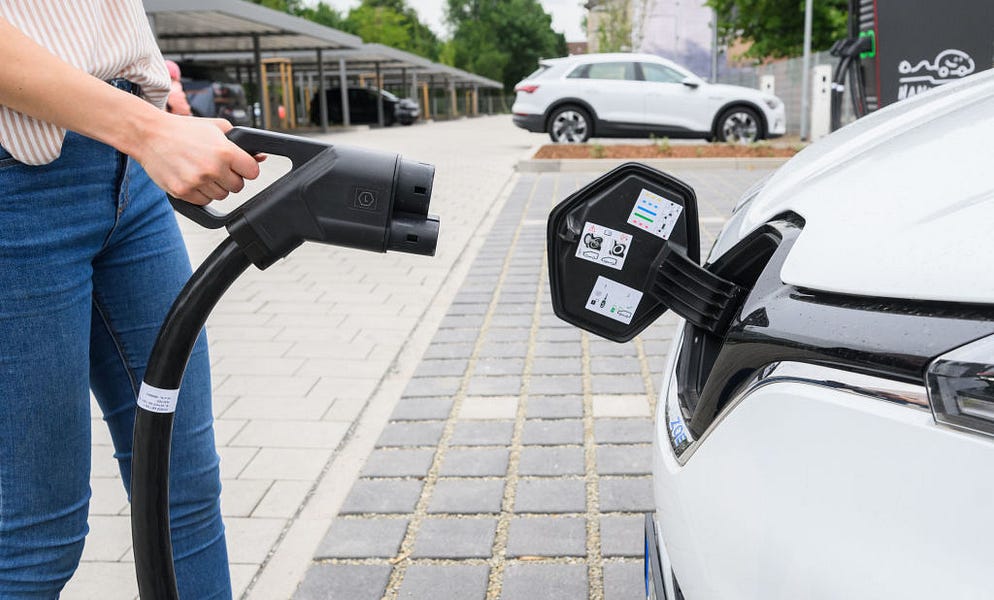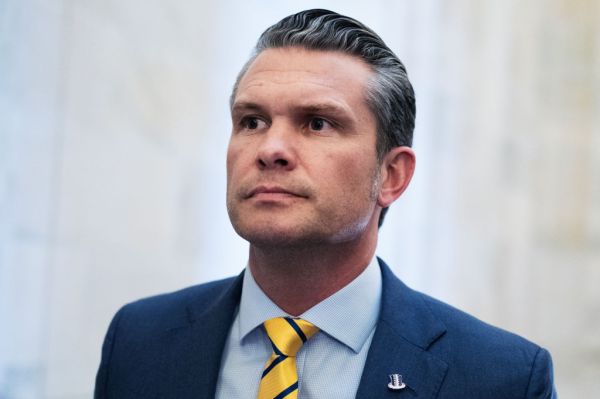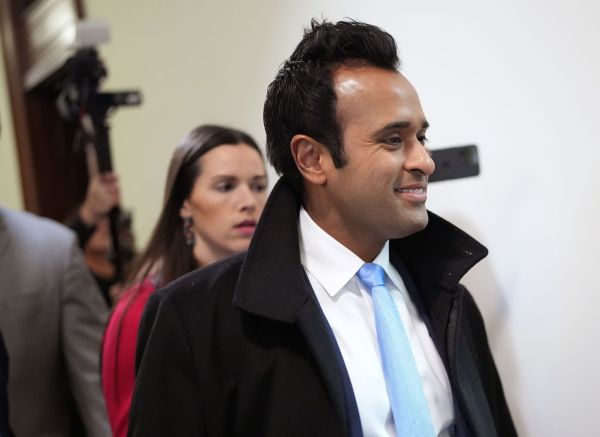Earlier this year, Goldman Sachs released a report claiming that the world will soon see an “oversupply” of the metals needed to manufacture the lithium-ion batteries that will power electric vehicles and facilitate a greener economy. Industry experts and consultants disagreed and soon after unleashed a storm of criticism rebutting the report: There is no imminent surplus of the battery materials—metals like nickel, cobalt, and lithium—but a looming shortage, they said.
“I think one of the critical things that was maybe misunderstood by this report … is [that] there’s a very big difference between capacity and true supply,” James Mills, a consultant at Benchmark Mineral Intelligence—a market intelligence and price reporting agency critical of the Goldman report—told The Dispatch. “As a Chinese chemical producer, I can develop additional capacity to produce the final chemical materials. However, that capacity is never going to run at 100 percent utilization, especially during that ramp up period.”
The Biden administration has often voiced its support for moving the U.S. economy toward more sustainable sources of energy. On his first day in office, President Joe Biden rejoined the Paris Agreement, an international climate action plan from which the Trump administration had withdrawn the U.S. in 2020. Biden campaigned on “an equitable clean energy future,” and, after clinching the election, announced that former Secretary of State John Kerry would serve his administration in the newly created role of special presidential envoy for climate. “Today’s clean energy technologies are a critical part of the arsenal we must harness to lower energy costs for families, reduce risks to our power grid, and tackle the urgent crisis of a changing climate,” the administration said in a June statement.
In a 2022 report, the Intergovernmental Panel on Climate Change estimated that simply maintaining existing policies worldwide would still lead to a 3.2-degree Celsius increase in average global temperatures by 2100 above pre-industrial levels (1850-1900), far more than the 1.5-degree goal set by the 2015 Paris Agreement to avoid the worst effects of climate change.
How do lithium-ion batteries fit into larger ambitions for a green energy future?
Put simply, all renewable energy—whether solar, wind, hydroelectric, or anything else—needs to be stored, and lithium-ion batteries have become an important solution to that problem. They are perhaps best known for powering electric vehicles.
Lithium-ion batteries have a high energy density—they store a lot of energy for their size and weight—and they’re easier than previous battery technologies to discharge and charge, Daniel Schwartz, director of the Clean Energy Institute at the University of Washington, told The Dispatch.
“They’ve been the battery of preference for consumer electronics, for mobile devices where you want more energy packed into a small package,” Schwartz said.
Lithium-ion batteries consist of four major parts: a cathode, an anode, an electrolyte, and a separator. The cathode is often composed of a combination of metals such as nickel, cobalt and lithium; the anode is typically graphite; a lithium-salt solution makes up the electrolyte; and the separator is plastic. (Sometimes the electrolyte and separator are described together as one component.)
These batteries discharge energy as lithium ions move through the electrolyte from the anode to the cathode. The separator keeps the cathode apart from the anode, while allowing ions to pass through the electrolyte. An external energy source can recharge a discharged battery, bringing the lithium ions back to the anode to begin again.
Nickel and graphite are extracted through underground or surface mining. Cobalt is mostly produced as a by-product of processing other minerals, such as nickel.
Lithium is typically extracted in one of two ways. The first, traditional hard-rock mining, entails digging into the earth in search of the mineral spodumene, which contains lithium. The second, brine extraction, involves pumping underground lithium-rich saltwater to the surface and letting it evaporate, then processing what is left behind.
So, will the world have the battery metals needed to keep up with growing demand from the clean energy sector?
The strain on supply that Mills and others warned about might already be making itself known. Lithium prices are up a whopping 434 percent year-over-year, according to Trading Economics.
Mills also pointed to another issue overlooked by the Goldman analysis: Much of the market for these minerals consists of long-term contracts between suppliers and buyers, some with fixed prices and some with variable prices. This factor makes quick adjustments to prices and supply unlikely. “It’s very difficult to say, ‘Right, I’m going to produce this material, and I’ll sell it to a spot market [a market in which commodities and payment are exchanged immediately].’”
“Certainly to fix a problem in 12 months’ time is impossible,” Mills added, although he assessed that supply could catch up to demand later this decade.
Even before backlash to the Goldman report brought shortages to the forefront, experts worried about an undersupply of the metals needed for lithium-ion batteries. “I take everybody’s gigawatt-hour projections and take them back to the lithium required to do it, and most of them are so far over what the lithium industry can supply,” industry expert Joe Lowry, also known as “Mr. Lithium,” told Bloomberg in April.
But as experts warn that the world is not producing enough of the battery metals to keep pace with the next few years of demand, some observers have raised concerns about what is already being produced.
“Cobalt is a conflict mineral—it’s a mineral where human rights and working practices are not ideal for where it’s extracted,” Schwartz said. The Democratic Republic of the Congo (DRC) supplied over 70 percent of the world’s cobalt in 2021 and holds nearly half of the world’s reserves, according to the U.S. Geological Survey. Of particular concern are the DRC’s artisanal mines, small-scale operations responsible for 20 percent of the country’s cobalt output. They’re known for their hazardous working conditions and for employing child labor.
But Schwartz told The Dispatch that advances in the field were moving the technology away from its heavy reliance on cobalt. Cobalt, Schwartz said, “was quite prevalent in the positive electrode—the cathode—of lithium-ion batteries, but now we’ve eliminated about 90 percent of it from the typical battery electrodes that are going into vehicles.”
Obtaining other minerals, such as lithium, poses different problems. In the “Lithium Triangle”—which includes parts of Argentina, Chile, and Bolivia—the metal is extracted through brines. Because this process requires evaporating massive pools of water in already-arid regions, it deprives nearby ecosystems and communities of much-needed water, activists warn. Argentina and Chile combined produced around a third of the world’s lithium in 2021 and hold over half of the world’s reserves, according to the U.S. Geological Survey.
Another potential concern is China’s stranglehold on the mining and processing of critical metals—15 of the DRC’s 19 cobalt-producing mines have ties to Chinese companies.
“We can’t build a future that’s made in America if we ourselves are dependent on China for the materials that power the products of today and tomorrow,” Biden said in February.
“[T]oday, China refines 60 percent of the world’s lithium and 80 percent of the world’s cobalt, two core inputs to high-capacity batteries—which presents a critical vulnerability to the future of the U.S. domestic auto industry,” a June 2021 White House report assessed. The document raised concerns that China could restrict exports of these materials due to tensions with the U.S., sell substandard materials, or entangle the U.S. in supply chains linked to human rights violations, including genocide—presumably a reference to the U.S.-recognized genocide of China’s Uyghur population.
Battery metal mining is also not without environmental impacts. The brine extraction used in South America guzzles up water in areas with little water to spare. And traditional mining can contaminate nearby bodies of water or groundwater used for agriculture or human consumption. A proposed mine at Thacker Pass, Nevada, for example, could contaminate groundwater under and around the mine beyond drinking water standards for hundreds of years.
Plus, mining itself requires immense quantities of energy that often come from burning fossil fuels. Still, Argonne National Laboratory estimates that lifecycle greenhouse gas emissions for an electric vehicle are less than half those of a comparable gas car. Those numbers take into account the energy spent mining needed materials, manufacturing the battery, and charging the electric vehicle.
The disposal of lithium-ion batteries further exacerbates environmental concerns. When used lithium batteries are dumped in landfills, they can release pollutants as they degrade, or even lead to landfill fires.
“We’re still kind of learning about the reuse and the recycling,” Schwartz told The Dispatch. “So, that is something that is really, I think, a frontier area.” He added that while economic considerations could drive technological advances in the reuse of batteries, “recycling will be driven by sound policy.”
Schwartz said that ultimately the overall environmental costs of mining for battery metals should be weighed against those of fossil fuel extraction: “We shouldn’t be construing it as one [type of energy] has no impact, because extracting things for clean energy also has impact, but we need to be balanced.”
So what has the U.S. response to these issues been?
The answer, in large part, seems to be “dig, baby, dig”—or at least try to. Over the past few years, a series of executive actions has pushed the U.S. to produce more battery metals domestically.
In June 2021, the Federal Consortium for Advanced Batteries released a “national blueprint for lithium batteries.” It recommended, among other things, that the U.S. encourage more domestic mining. In 2021, the U.S. produced less than 1 percent of the world’s cobalt and nickel, according to the U.S. Geological Survey. The agency did not report domestic lithium production in order to protect the proprietary data of the single lithium mine operating in the U.S. And the U.S. hasn’t produced graphite domestically since the 1950s.
On February 24, 2022, the Department of the Interior updated a 2017 executive order issued by former President Donald Trump directing federal agencies to increase American involvement in the supply chains of “critical minerals,” as well as provide better data and streamlined permitting processes for their domestic mining. The update added nickel to the list of critical minerals, which already included graphite, cobalt, and lithium.
And on March 31, Biden invoked the Cold War-era Defense Production Act to support the reliable production and supply of material critical to the clean energy economy, including metals like graphite, lithium, cobalt, and nickel.
“While it’s too early to evaluate the impact of that order, the signal it sent to markets, to the global community and to miners was important,” Conor Bernstein, a spokesman for the National Mining Association (NMA), told The Dispatch in a statement. “Engagement is well underway between the Department of Defense and industry and there’s considerable interest from our members. Without a doubt, the administration’s early and intense focus on mineral supply chain challenges and recognition of the importance of minerals to achieving key pieces of the President’s agenda has elevated issues that we’ve been talking about for years to center-stage.”
Mills agreed: “I think that [Biden’s series of executive actions] places a lot of downward pressure on these regions developing some of these assets.”
But the U.S. can be a challenging environment for mining. Attempts to mine battery metals domestically have seen varying degrees of success. In Minnesota, Nevada, Idaho, North Carolina, and a handful of other sites across the country, problems have arisen: environmentalists worried about harm to ecosystems, indigenous groups opposed to disruptions to culturally significant land, homeowners who don’t want a mine in their backyards, and government regulators moving slowly.
“[G]etting where the administration wants to go at the speed it has articulated requires immediate attention to the bottlenecks and redundancies in our mine permitting processes,” Bernstein said. “The administration needs to commit to building the secure, domestic industrial base of tomorrow and that begins with permitting it.”
A 2017 report prepared for the NMA by SNL Metals & Mining, an industry data company, estimates that mining projects in the U.S. face a seven- to 10-year permitting process that passes through multiple state and federal agencies and opportunities for public objections. According to the report, the average permitting period in Canada and Australia is a comparatively brief two years.
“I think once there’s a clear framework about how those projects can receive positive support, essentially, that accelerates that process,” Mills said. And he believed that recent pressure from the Biden administration could encourage that.
Twin Metals Minnesota, a company hoping to build a copper and nickel mine in northeastern Minnesota, is one example of a less-than-successful attempt at domestic mining. The company submitted its first of many permit applications, this one for a “pre-feasibility study,” back in 2012. But in a major win for locals worried that pollution from the proposed mine would harm the nearby Boundary Waters Canoe Area Wilderness, the Biden administration canceled Twin Metals’ mineral leases earlier this year after concluding they were improperly renewed under the Trump administration in 2019.
Glenn Miller, an emeritus professor in the Natural Resources and Environmental Science Department at the University of Nevada, is typically a critic of the mining industry. But the importance of lithium to lithium-ion batteries and a green economy has led him to support the development of the lithium mine in Thacker Pass, Nevada, a project which has drawn fierce opposition from nearby indigenous groups. “I’ve taught environmental science courses for years and realize the importance of climate change is not to be underestimated,” he told The Dispatch.
“I think lithium is really important. I’m a strong supporter of a domestic source of lithium,” Miller added. “And Thacker Pass seems to be rather benign compared to some of the other, gold mines we have.”








Please note that we at The Dispatch hold ourselves, our work, and our commenters to a higher standard than other places on the internet. We welcome comments that foster genuine debate or discussion—including comments critical of us or our work—but responses that include ad hominem attacks on fellow Dispatch members or are intended to stoke fear and anger may be moderated.
You are currently using a limited time guest pass and do not have access to commenting. Consider subscribing to join the conversation.
With your membership, you only have the ability to comment on The Morning Dispatch articles. Consider upgrading to join the conversation everywhere.